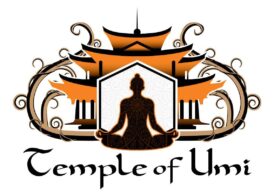Chakra Balancing with Sound Healing: Benefits and Techniques

By Temple of Umi

Table of Contents
Ancient traditions have reemerged as effective methods for balancing our mind, body, and soul to pursue holistic well-being and spiritual enlightenment. Chakra Balancing with Sound Healing is one method rooted in Eastern philosophy and is rapidly gaining popularity in the West. In this thorough manual, we set out to investigate this transformational art’s significant advantages and complex methods. We will reveal the keys to achieving balance, vigor, and inner serenity by delving into the mystic world of the chakras and the power of sound. Here, ancient knowledge and cutting-edge holistic therapy collide in chakra balancing with sound healing.

Table of contents
A. Understanding Chakras
The numerous energy centers within the human body, known as chakras, are also known as the “wheels of light.” Seven main chakras align along the spine, according to ancient Indian traditions, each of which corresponds to a particular component of our bodily, emotional, and spiritual well-being. This is especially true with yoga and meditation.
These chakras are:
- Root Chakra (Muladhara): Located at the base of the spine, it is associated with stability, security, and basic needs.
- Sacral Chakra (Svadhisthana): Found just below the navel, it governs creativity, sexuality, and passion.
- Solar Plexus Chakra (Manipura): Situated in the upper abdomen, it relates to personal power, confidence, and self-esteem.
- Heart Chakra (Anahata): Located at the heart, it’s linked to love, compassion, and emotional healing.
- Throat Chakra (Vishuddha): Positioned at the throat, it’s associated with communication and self-expression.
- Third Eye Chakra (Ajna): Found between the eyebrows, it’s connected to intuition, insight, and spiritual awareness.
- Crown Chakra (Sahasrara): Located at the crown of the head, it represents enlightenment, spirituality, and our connection to the divine.
Understanding the nuances of each chakra is crucial to grasp the concept of chakra balancing through sound healing, which we will explore in depth throughout this article.
B. The Role of Sound Healing
A therapeutic technique known as sound healing uses the vibrational frequencies and mellow tones created by various instruments or vocal skills to enhance one’s physical, emotional, and spiritual well-being. It’s a centuries-old custom with roots in many different global cultures.
Everything in the universe, including our bodies, vibrates at precise frequencies. This is the basic tenet of sound therapy. Our chakras resonate at their best frequencies when they are in harmony, which promotes health and energy. However, when they are out of harmony or obstructed, it can cause problems with the body and the mind.
In order to realign and balance the chakras, sound therapy introduces particular frequencies and vibrations to the body and mind. This can be accomplished using instruments like tuning forks, crystal bowls, Tibetan singing bowls, or even vocal techniques like chanting and mantras.
In this post, we’ll look into the significant role that sound healing plays in chakra balancing and examine the different methods and tools employed to bring the chakras back into balance.
C. Purpose of the Article
This article’s main goal is to give readers a thorough grasp of chakra balancing through sound therapy. In this article, we debunk the myths surrounding chakras, discuss how sound healing can help keep them balanced and provide helpful information about different healing methods.
This essay will be invaluable for everyone interested in holistic health, regardless of their experience level. You will have a greater understanding of the complex relationship between chakras and sound by the time you have finished reading these pages and the knowledge necessary to start your own path of chakra balancing through sound healing methods.

Exploring Chakras
A. Root Chakra (Muladhara)
1. Location and Color: The Root Chakra, Muladhara in Sanskrit, is the first of the seven primary chakras. It is situated at the base of the spine, near the coccyx, and its associated color is red. This chakra is the foundation for our energetic system, representing our sense of stability, security, and connection to the physical world.
2. Imbalances and Symptoms: When the Root Chakra is imbalanced, individuals may experience various physical and emotional symptoms. These may include feelings of insecurity, financial stress, and a lack of grounding. Physical symptoms include lower back pain, digestive issues, and fatigue.
3. Sound Healing Techniques Sound healing techniques for balancing the Root Chakra often involve low-frequency sounds and vibrations. You can use Tibetan singing bowls, specifically designed root chakra soundtracks, or grounding mantras like “LAM.” Meditating to these sounds can help restore balance and a sense of security.
B. Sacral Chakra (Svadhisthana)
1. Location and Color The Sacral Chakra, or Svadhisthana, is located in the lower abdomen, about two inches below the navel. Its associated color is orange. This chakra is closely linked to creativity, emotions, and sensual experiences.
2. Imbalances and Symptoms An imbalanced Sacral Chakra can result in emotional instability, creative blocks, and intimacy issues. You might feel emotionally overwhelmed or struggle with your self-worth. Physical symptoms can include lower abdominal discomfort and reproductive system problems.
3. Sound Healing Techniques To balance the Sacral Chakra with sound, you can use instruments like crystal singing bowls with an orange hue or listen to music composed specifically for this chakra. Chanting the “VAM” mantra during meditation can also stimulate healing in the Sacral Chakra.

The Power of Sound
A. How Sound Affects Chakras
Sound profoundly impacts our chakras, or energy centers throughout our bodies. These energetic vortexes are very sensitive to different vibrations and frequencies. How does music affect the chakras?
- Resonance: Each chakra vibrates at a different frequency. Chakras vibrate and attain balance when subjected to sound waves with frequencies corresponding to their own. As an illustration, the crown chakra resonates with higher frequencies while the root chakra does not.
- Clearing Blockages: Sound can dislodge and release energy blockages within the chakras. It’s akin to using sound as a gentle force to remove obstacles, allowing the energy to flow freely.
- Activation: Sound can awaken dormant or underactive chakras. When the right frequencies are applied, it can stimulate and activate chakras that may have been inactive due to stress, trauma, or neglect.
B. Frequency and Vibration
Understanding the role of frequency and vibration is crucial in sound healing and chakra balancing. Here’s a closer look:
- Frequency: Frequency in the context of sound therapy is the number of cycles per second that a sound wave goes through. A particular frequency vibrates within each chakra. For instance, the root chakra has a resonance frequency of about 396 Hz, whereas the crown chakra has a resonance frequency of about 963 Hz.
- Vibration: Vibration is the physical oscillation or movement caused by a sound wave. When sound waves with the right frequency interact with a chakra, they induce a corresponding vibrational response. This vibration can help clear blockages and restore balance.
- Harmonics: The interplay of different frequencies creates harmonics. Harmonics can be used strategically in sound healing to address multiple chakras simultaneously, promoting overall balance and harmony within the energy system.

C. Traditional Sound Healing Instruments
Traditional sound healing instruments have been used for centuries to balance chakras and promote well-being. Here are three widely recognized instruments:
- Singing Bowls: When hammered or played with a mallet, singing bowls—often made of metal or crystal—produce resonant tones. Both specific chakras and overall energy balancing are connected to them. Bowls of various sizes are utilized for the different chakras.
- Tuning Forks: Tuning forks are precise instruments that emit a pure and consistent frequency when struck. Practitioners use them near or on the body’s energy centers to entrain the chakras to the desired frequencies.
- Mantras and Chants: Chants and mantras involve the vocalization of particular sounds or words that positively affect specific chakras. These sounds can be repeated while meditating or chanting to activate and align the associated chakras, clearing obstructions and re-establishing balance.
When used with intention and knowledge, these traditional instruments can be powerful tools for chakra balancing and overall well-being.
Benefits of Chakra Balancing
A. Physical Health:
Your physical health can be significantly impacted by chakra balancing through sound healing. Each chakra corresponds to particular organs and body processes. Physical well-being can be enhanced when these energy centers are in harmony and balance.
Each chakra can be targeted and balanced, utilizing specific frequencies and vibrations in sound healing. For instance, the health of the legs, feet, and skeletal system is influenced by the Root Chakra, which is connected to the base of the spine. This chakra can be balanced through sound therapy, which can help with problems, including relief of lower back pain and general physical stability.
Additionally, sound healing strengthens the immune system, eases stress, and encourages relaxation. The relaxing benefits of sound therapy can unintentionally improve your physical health because stress is a significant cause of many health issues.
B. Emotional Well-being:
Since emotions and chakras are closely related, sound healing is a potent method for resolving emotional imbalances. You may feel mood swings, anxiety, or depression when your chakras are out of balance. By restoring balance to these energy centers, sound healing is beneficial.
As an illustration, the Heart Chakra, situated in the chest region, controls feelings like love, compassion, and forgiveness. You can feel more love and emotional well-being by releasing emotional blockages with sound healing techniques focusing on the Heart Chakra.
Deep relaxation is frequently brought on during sound healing sessions, which can also aid in the processing and releasing of pent-up emotions. This could result in a more steady and upbeat emotional state, improving your general well-being.
C. Mental Clarity:
The Third Eye Chakra, situated in the forehead between the eyebrows, correlates directly with mental clarity. This chakra is linked to intelligence, intuition, and rational thought. You may have better focus, improved problem-solving skills, and a stronger feeling of purpose when it is in balance.
Clearing the mind and fostering mental clarity are benefits of using sound healing techniques directed toward the Third Eye Chakra. The chakra is stimulated by the vibrations and frequencies in these techniques, enabling you to reach higher consciousness and mental clarity.
Many people regularly participate in sound healing sessions focusing on the Third Eye Chakra and report having more creativity and better decision-making abilities.

D. Spiritual Growth:
Chakra balance through sound healing benefits both spiritual development and life’s physical and emotional facets. The top of the head’s Crown Chakra is connected to spirituality, enlightenment, and a link to the divine.
People might benefit from safe therapeutic techniques that emphasize the Crown Chakra as they travel along their spiritual path. With these techniques, one can develop a greater awareness of their purpose in life and the interconnection of all living things.
People frequently describe having more spiritual awareness, inner calm, and a deeper connection to their spiritual practices and beliefs after aligning and balancing their Crown Chakra. Sound healing can be a valuable tool for those looking to broaden their spiritual horizons and discover purpose in their life.
Techniques for Chakra Balancing with Sound
A. Guided Meditation
- Guided meditation is a powerful technique for chakra balancing, using soothing narration to lead you through each chakra, helping you visualize and cleanse them.
- During guided meditation, you’ll focus on breathing techniques and imagery that align with each chakra, creating a deep sense of relaxation and energy flow.
- This practice enhances self-awareness and promotes harmony among your chakras, making it an excellent choice for beginners.
B. Chakra Sound Bath
- A chakra sound bath involves immersing yourself in a bath of healing sound frequencies, typically created with instruments like singing bowls and gongs.
- As the resonant sounds wash over you, they vibrate harmoniously with your chakras, facilitating their alignment and release of stagnant energy.
- Chakra sound baths provide a deeply meditative and rejuvenating experience, leaving you feeling balanced and re-energized.
C. Chakra Affirmations
- Chakra affirmations are positive statements or phrases aligned with each chakra, spoken or thought, to restore balance.
- Repeating affirmations can address specific chakra imbalances, such as self-confidence for the solar plexus or love and compassion for the heart chakra.
- Consistent use of chakra affirmations can reprogram your mindset and promote long-term chakra harmony and overall well-being.

D. Self-Healing with Sound
- Self-healing with sound involves using various instruments like tuning forks or crystal bowls on your chakras to restore balance.
- This practice empowers individuals to actively participate in their well-being actively, targeting specific chakras needing attention.
- Learning and practicing self-healing techniques with sound can be a transformative journey toward maintaining chakra health and inner equilibrium.
Preparing for a Sound Healing Session
A. Finding a Qualified Practitioner:
Locating a skilled practitioner for sound healing and chakra balancing is important. Look for those who have had training in energy healing or sound therapy. Ask for referrals from reliable sources or read online evaluations to confirm their expertise. You will be led by a skilled practitioner on a healing journey that is both secure and transformative.
B. Setting the Right Intentions:
Before a sound healing session, it’s crucial to set the correct intentions. Think for a moment about what you want to accomplish or heal. Declaring your intentions upfront will help the session run more smoothly by aligning your energy with your objectives, whether to release lousy energy, reduce tension, or obtain clarity.
C. Creating a Peaceful Space:
Creating a peaceful space for your sound healing practice is vital for a harmonious experience. Choose a quiet, clutter-free room where you won’t be disturbed. Use soft lighting or candles to create a soothing ambiance. Lay out a comfortable mat or cushion to sit or lie on. This serene environment will help you connect with the healing vibrations effectively.

The Sound Healing Session
A. What to Expect:
When you embark on a chakra-balancing sound healing session, knowing what to expect is essential. Typically, you’ll find yourself in a calm and serene environment, lying down or sitting comfortably. The practitioner will create soothing sounds using various instruments, helping you relax deeply. As the session progresses, you might experience inner peace, heightened awareness, and a gentle release of emotional blockages.
B. The Role of the Practitioner:
The practitioner is crucial in guiding you through the chakra-balancing sound healing process. They are skilled in using sound frequencies to target specific chakras, helping you find balance and harmony. Their expertise ensures the session is safe and tailored to your needs. They’ll also guide you on focusing your intentions and thoughts during the session, enhancing effectiveness.
C. Personal Experiences:
Personal experiences during chakra balancing sound healing sessions can vary widely. Some individuals feel a profound sense of relaxation and inner calm, while others may have vivid visions or emotional releases. It’s common to feel a tingling sensation or warmth in different body parts as your chakras align. These profoundly personal experiences can evolve as you continue your sound healing journey. Sharing your experiences with your practitioner can help you gain deeper insights into your chakra health.
After the Session
A. Grounding and Integration
After a sound healing session, it’s crucial to incorporate your chakras’ newly found balance into your daily life. Spend time grounding yourself by connecting with the land’s energy by walking barefoot on grass or practicing outdoor meditation. By dropping yourself, you may keep your composure and get the rewards of chakra balancing in your daily interactions.
B. Self-care techniques:
Sound therapy for chakra balancing is only one type of self-care. Prioritize self-care activities in your routine to enhance its effects. This could involve practicing stress reduction strategies, eating a healthy diet, and exercising regularly. Taking care of your physical and emotional needs improves the overall effectiveness of sound therapy, promoting harmony and wellness.
C. Reflection and journaling:
Keeping a notebook to record your experiences after receiving sound therapy can be beneficial. Think about your physical, emotional, and spiritual well-being. Make a note of any adjustments or new understandings. Journaling is a valuable tool for keeping track of your development and comprehending the changing connection between sound therapy and the balance of your chakras, which promotes self-awareness and personal growth.

Common FAQs
A. Is Sound Healing Safe?
- Sound healing is generally considered safe when practiced responsibly. However, consult a qualified practitioner if you have specific health concerns.
B. How Often Should I Balance My Chakras?
- The frequency of chakra balancing varies. Some do it daily, while others follow their intuition or consult experts. Personalize your practice.
C. Can I Practice Sound Healing at Home?
- Yes, you can practice sound healing at home with instruments like singing bowls or guided audio. Ensure a quiet, comfortable space for best results.
D. Are There Any Side Effects?
- Sound healing usually has no harmful side effects. However, be aware of any discomfort or emotions that may arise during sessions.
E. What If I Can’t Hear Certain Frequencies?
- It’s normal not to hear all frequencies. Focus on what you can perceive, as your body can still benefit from the vibrations and resonance.
Final Words
Recap of Chakra Balancing Benefits: Chakra balancing offers many benefits, including improved physical health, emotional stability, and mental clarity. You can achieve balance and well-being that positively impact all aspects of your life through the harmonizing power of sound healing.
Embracing Sound Healing: Sound healing is a transformative journey towards self-discovery and inner harmony. Incorporating sound’s soothing vibrations into your life opens doors to profound relaxation, emotional release, and spiritual growth. It’s a path of self-care and enlightenment worth exploring.
The Journey Ahead: The journey ahead in your sound healing and chakra balancing practice is exciting and evolving. As you delve deeper into this ancient art, you’ll discover new techniques, experience personal breakthroughs, and connect with a community of like-minded individuals. Your path to holistic wellness and spiritual awakening is bound to be filled with fascinating discoveries.
Useful links
- What is Ayahuasca?
- Where to get Ayahuasca in the USA
- Ayahuasca retreats USA. Learn more.
- What is trauma bonding?
- Sacred Plant Medicine Retreats in Georgia
- 5 Ayahuasca Retreats in California Worth Exploring
- 7 Best Aya Retreats in America. Click here.
- Mcdonough Ayahuasca retreat
- Conley Ayahuasca retreat
- Whitesburg Ayahuasca retreat
- Brooks Ayahuasca retreat
- Gay Ayahuasca retreat
- Williamson Ayahuasca retreat
- Orchard Hill Ayahuasca retreat
- Glenn Ayahuasca retreat
- Luthersville Ayahuasca retreat
- Shady Dale Ayahuasca retreat
- Bowdon Junction Ayahuasca retreat
- Sargent Ayahuasca retreat
- Greenville Ayahuasca retreat
- Lovejoy Ayahuasca retreat
- Winston Ayahuasca retreat
- Rutledge Ayahuasca retreat
- Moreland Ayahuasca retreat
- Molena Ayahuasca retreat
- Lebanon Ayahuasca retreat
- Good Hope Ayahuasca retreat
- Haralson Ayahuasca retreat
- An Inclusive List of Psychedelic Quotes
- Mount Ayahuasca retreat
- Grantville Ayahuasca retreat
- Pine Lake Retreat near
- Rydal Ayahuasca retreat
- Porterdale Ayahuasca retreat
- Waco Ayahuasca retreat
- Temple Ayahuasca retreat
- Bethlehem Ayahuasca retreat
- Jenkinsburg Ayahuasca retreat
- Adairsville Ayahuasca retreat
- Red Oak Ayahuasca retreat
- Woodbury Ayahuasca retreat
- Cassville Ayahuasca retreat
- Redan Ayahuasca retreat
- North Decatur Ayahuasca retreat
- Grantville Ayahuasca retreat
- Hillsboro Ayahuasca retreat
- Jackson Ayahuasca retreat
- Braselton Ayahuasca retreat
- Zebulon Ayahuasca retreat
- Flovilla Ayahuasca retreat
- Auburn Ayahuasca retreat
- Warm Springs Ayahuasca retreat
- Scottdale Ayahuasca retreat
- Lithia Springs Ayahuasca retreat
- Villa Rica Ayahuasca retreat
- Grayson Ayahuasca retreat
- Sunny Side Ayahuasca retreat
- Senoia Ayahuasca retreat
- Locust Grove Ayahuasca retreat
- Chamblee Ayahuasca retreat
- Fairburn Ayahuasca retreat
- Snellville Ayahuasca retreat
- Monticello Ayahuasca retreat
- Union City Ayahuasca retreat
- Tallapoosa Ayahuasca retreat
- Bremen Ayahuasca retreat
- Hampton Ayahuasca retreat
- Monroe Ayahuasca retreat
- Marble Hill Ayahuasca retreat
- Madison Ayahuasca retreat
- Dawsonville Ayahuasca retreat
- Felton Ayahuasca retreat
- Concord Ayahuasca retreat
- Mansfield Ayahuasca retreat
- Taylorsville Ayahuasca retreat
- Roopville Ayahuasca retreat
- Turin Ayahuasca retreat
- Franklin Ayahuasca retreat
- Clarkdale Ayahuasca retreat
- Talking Rock Ayahuasca retreat
- Jersey Ayahuasca retreat
- Kingston Ayahuasca retreat
- Bostwick Ayahuasca retreat
- North Metro Ayahuasca retreat
- Meansville Ayahuasca retreat
- Social Circle Ayahuasca retreat
- White Ayahuasca retreat
- Rhode Island Ayahuasca retreat
- Maryland Ayahuasca retreat
- Delaware Ayahuasca retreat
- New Jersey Ayahuasca retreat
- Connecticut Ayahuasca retreat
- Massachusetts Ayahuasca retreat
- Hampshire Ayahuasca retreat
- Pennsylvania Ayahuasca retreat
- New York Ayahuasca retreat
- Florida Ayahuasca retreat
- South Carolina Ayahuasca Retreat
- North Carolina Ayahuasca Retreat
- West West Virginia Ayahuasca retreat
- Virginia Ayahuasca retreat
- Ohio Ayahuasca retreat
- Alabama Ayahuasca retreat
- Mississippi Ayahuasca retreat
- Tennessee Ayahuasca retreat
- Kentucky Ayahuasca retreat
- IndianaAyahuasca retreat
- ILLINOIS Ayahuasca retreat
- Missouri Ayahuasca retreat
- Arkansas Ayahuasca retreat
- Louisiana Ayahuasca retreat
- Texas Ayahuasca retreat
- Oklahoma Ayahuasca retreat
- KansasAyahuasca retreat
- Ayahuasca retreats near me in Experiment.
- A wellness retreat in Georgia
- What is Ayahuasca?
- Embark on a Journey of Transformation with Spiritual Healing
- Unveiling Healing Energy at the Temple of Umi
- 10 Energy Healing Techniques to Transform Your Life
- Where to get Ayahuasca in the USA
- Top Ayahuasca retreats in the USA. Learn more.
- Cost of Ayahuasca Retreat: Balancing Cost and Experience. Learn more.
- What is trauma bonding?
- A Journey into the Healing Properties of Psychedelic Mushrooms. Learn more.
- Ayahuasca Retreat Georgia – Experience Spiritual Awakening
- Spiritual Retreats Georgia
- Shaman in America Exploration
- Shamanism – Shamanic healing
- Shaman Healing Guide
- Ayahuasca ceremonies Ayahuasca ceremonies near you in the USA
- Ayahuasca Experience
- DMT Journey, Benefits, and Side Effects
- Iowaska – What is it?
- Plant medicine retreats in Georgia
- Why massage is beneficial, according to a cardiologist.
- Are mushrooms truffles – What Is a Truffle?
- 11 Best Ayahuasca Retreats in the USA for Spiritual Healing
- What is Rapé?
- What is a Tincture?
- Where to find Ayahuasca near me
- Healing retreats USA
- Best Retreats USA









